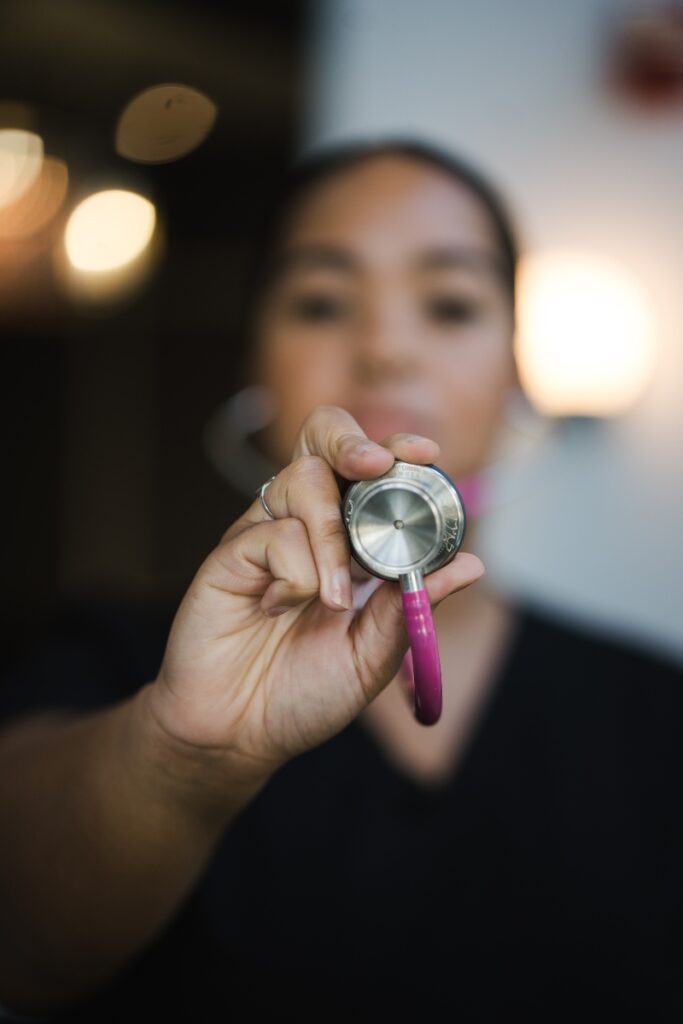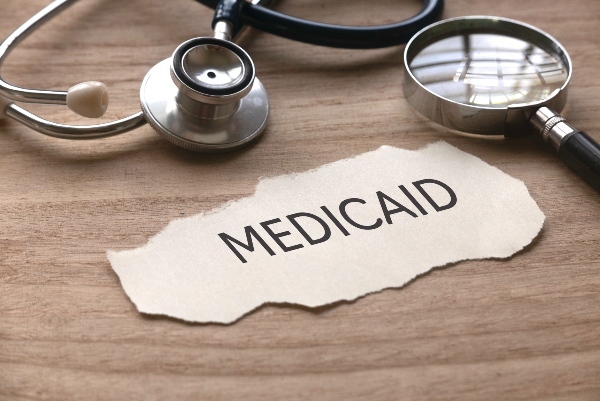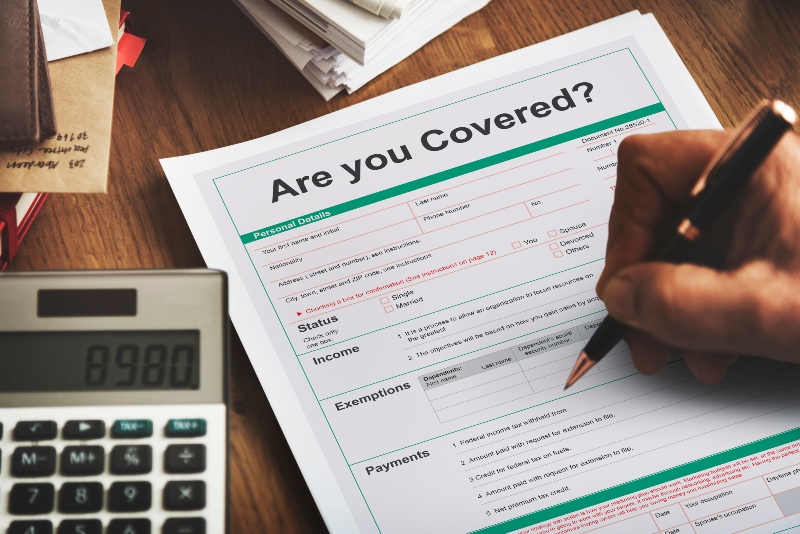Part One: The Basics, and the Basic Problem
With the recent Congressional and Presidential declaration that the Covid emergency “has ended,” there remain a lot of questions and confusion about what Americans can expect, and about how our healthcare system operates in general. Our Director of Impact and Equity Rozella Kennedy sat down with our Director of US Health Kim Langenhahn for a far-reaching conversation about US healthcare and its many facets, angles, deficits—but also opportunities and bright spots in the quest to provide equitable, quality healthcare more broadly to people living in the United States. This is a jam-packed conversation, so we will parse it into two parts. Enjoy Part One, where we look at the “end of the pandemic,” and some general facts, figures, and frustrations about US healthcare as it currently is delivered. Part Two will dive more into issues around (in)equity and how societal shifts are pointing towards some possible encouragements.
US Healthcare 101
Rozella Kennedy: So, to start off this conversation Kim, can you provide a high-level description of what healthcare access actually is in our country?
Kim Langenhahn: Sure. Knowing that no national healthcare system is perfect, we could start with a comparison and contrast. When you think about a place such as the United Kingdom, they have a single-payer system, with care provided through government-based providers. That leads to one holistic system that ostensibly covers everyone’s healthcare needs in the country.
RK: Ostensibly.
KL: Right. While some people may fall through the cracks, the structure lends itself to greater simplification and less of that kind of risk.
Now on the other hand, when you think of the US, it’s really a mixed system. We have a combination of private insurance, with some of those insurers being nonprofit, and others for-profit. Add to that the government, which covers some forms of public insurance, it’s quite complex.
When it comes to private insurance, a majority of the people in the US—I’ve seen data that says at least half of the people—get their coverage through an employer-based insurance program.
And there are even more layers of complexity to contend with. Small businesses often do not, or cannot, offer insurance. Many employers provide coverage that does not meaningfully meet the actual needs of the employees at all.

RK: Entrepreneurs have to cover themselves, which makes it extremely difficult to launch a successful business or start-up.
KL: That’s right. And even among the half of insured people who receive coverage through their employer, there are so many people who do not have access to those types of jobs. The fortunate among them may find they can be covered through a government program like Medicare or Medicaid.
RK: Oh, so there is a safety net!
KL: Not so fast. Those systems are really fragmented, particularly Medicaid. The money for this entitlement comes from the federal government, but each state creates its own laws and policies and regulations, and each state runs its own Medicaid systems.
Let’s Get into Dollars and Sense
RK: States’ rights. The lottery of location.
KL: Compounded with the market-based core of the American society, we are left with a system that has lots of gaps and leaves lots of people behind.
RK: Connecting healthcare to money and maximizing profit seems to invite cost-cutting, price gouging, and other practices—all on the backs of healthcare patients.

KL: This is a sad fact. And we live in a nation whose organizing economic principle is capitalism. I am not saying capitalism is inherently evil, but the way we give it primacy and the way that we do not do a good job of regulating and putting in guardrails from government, that’s where things get problematic.
RK: I’m old enough now to remember when there was a safety net, flawed or not, in the tradition of FDR’s Great Society, fortified by LBJ—and decimated, by design, during the Reagan years. I personally heard the stump speeches where he said the nine most terrifying words in the English language were: “I’m from the government and I’m here to help.”Many of us are aware that it has been a decades-long plan to diminish federal government services. The outcome is this fragmentation, complexity and too many people falling between the gaps. Many of the people working in health equity arena say this is deliberate.
Let’s talk about the “gaps” for a minute and who falls between them. We can start with the more privileged strata of society. I have good insurance coverage, but the system is so complex, because of a new doctor’s appointment I had two days before the end of the calendar year, and how my provider coded the visit, I was on the hook for some $600 and could not apply my HSA to it. I should have waited a week. I was furious!
KL: Yeah, it’s a mind game trying to navigate it all. Even if you do have the information and the resources.
RK: Paying it was an annoyance but not a catastrophe. But I couldn’t help but think about people with less-good care, or no care at all. Or who, for a variety of reasons—not just money or coverage but also negative personal or family experiences with inferior care discrimination, bias, and harm, or don’t trust the healthcare system and don’t engage in preventative care … every time there is a cold, they are in the ER.
Because they don’t have a general care provider, they don’t get checkups. I have relatives who live this way, so this is not some theoretical.
KL: There are so many ways people can be alienated from care and healthcare awareness. Not least of which from the very poorest or unhoused people, but there are also the folks who work two and three jobs, or who don’t have control over their work schedules. They have enormous constraints on their time.
So even if they do have employer-based insurance and, presumably, access to “quality care,” they’re not going to be able to just go in and see a doctor, right?
RK: And if they get to the point where they are sick enough, they go through the ER. This exacerbates this ethos of scarcity and inconvenience and panic for people who are already struggling. Emergency rooms are traumatic places! The lights, the cacophony, the long, long waits. It’s demeaning.
I really think we’re in a societal spiral of stress and sadness and lacking. It’s a tragedy, from an equity standpoint, and actually, from a humanity standpoint.
KL: Even if I could set aside the morality of ensuring people have access to those things they need to live full, healthy lives—which is not something I can actually do—there is still the economic fact that many hospitals are nonprofits operating under charity status, meaning they have to provide a certain amount of care to people who show up whether they’re insured or not.
And if the patient cannot pay, that cost is eventually paid by us, the taxpayers.
RK: It’s nonsensical. Non-cents-ical, if I could make a terrible pun.
KL: Indeed. Just consider the economic impact in terms of the increased cost and lost productivity, again, it should not pass anyone’s capitalist-efficiency standard.
The Pandemic Temporarily Tightened the Safety Net

RK: (Deep sigh.) And so, we had the pandemic, during which many healthcare protections were put into place.
There was more access to telehealth, it became easier to get prescriptions through a video call, and other benefits. And as they say, once the public has been given a benefit or entitlement, it is extremely difficult to take it away. But away some of it has gone…. Seriously, we had something close to guaranteed income for a minute, right? And as far as I know, there were no statues of Karl Marx erected anywhere…. We did not devolve into a Communist dictatorship.Can you provide for the layperson, the landscape of some of the protections that were put in place during the pandemic that are now gone?
KL: Certainly. Throughout the course of the pandemic, there were a lot of moving parts, with a lot of different legislation put in place relating to the overall well-being of the population and specifically in the health sphere. To elaborate fully would require at least a few more interviews, but one of the most notable pieces of legislation was implemented in the very beginning of the pandemic: “The Families First Coronavirus Response Act.”
This legislation provided increased federal Medicaid funding for all states, provided they followed some rules. One of these rules was a requirement to maintain continuous coverage for people within the Medicaid system.

RK: Guaranteed Medicaid?
KL: Yes. Pre-pandemic, it was up to each state to annually re-evaluate whether a beneficiary would be eligible to receive continued Medicaid benefits, a process called redetermination.
People could, and did, (and will) fall off the rolls for a variety of reasons: their contact information is no longer up to date, or they no longer meet the income thresholds, and other factors.
During the pandemic, the federal government declared: “We’re going to scrap the redetermination process. For the duration of this public health emergency, people will remain enrolled in Medicaid, no matter what.”
RK: That sounds good, making sure people don’t get kicked off healthcare because maybe they are going through other tough situations, like eviction, illness, divorce, or any other reason that might lead to contact information going awry. On top of a global pandemic that caused more than 1.1 million fatalities in the United States between 2020 and today.
KL: It was a humane response to an unfathomably frightening and chaotic public health crisis. And so, we had this moment in time over the last couple of years where people were not getting bumped off Medicaid.
And at the same time—no surprise—we had record numbers of people signing up for Medicaid. Between the beginning of the pandemic and toward the end of 2022, we had almost 21 million additional people enrolled in Medicaid. This is a very significant number.
RK: You told me at the peak, there were over 90 million Americans covered by Medicaid.
KL: Correct. Now, to be clear, some of those numbers included children who are covered by CHIP, the Children’s Health Insurance Program. But nonetheless, you saw enormous numbers of previously uninsured people getting access to healthcare coverage. This was, I think, America’s biggest step toward universal coverage.
RK: And it was good, right?
KL: So it was. It was an interesting social experiment.
RK: And we didn’t send anyone to a Gulag.
KL: No, as you said, we did not devolve into a socialist state by providing some folks additional coverage. It was, on the whole, a good thing—especially for people who are typically left out of that patchwork American system that we talked about earlier.

There Really is No “Us” and “Them”
RK: There is a subset of our population that is historically always on the losing equation of anything approaching prosperity or dignity, or even minimal service to live and thrive. We address this discrepancy in a lot of our Economic Mobility work. And when we are discussing healthcare, I think it’s important to say that this is not entirely racial. It’s not just Black people. It’s not just Brown people. I read something there are more poor white people in the United States than any other racial group.
KL: Yes, the number of white people living in poverty greatly outstrips the number of impoverished Black people. However, the percentage of Black people living below the poverty line is twice that of whites. So yes, this goes beyond the color of your skin.
RK: And it’s older people. It’s rural people, it’s disabled people. Can you give us a lens into some of the groups and untold stories that people need to be thinking about when they think about health equity in the big picture.
KL: This is an enormous topic, Rozie, but let me share at least that there is such a convergence of -isms and deficits at play.
A whole host of people are being imperiled when they don’t have access to care. The causes for this lack of access range from structural racism to lack of economic mobility to the affordable housing crisis to the expensive education system which creates a lack of access to quality education, especially when you consider the importance of early education.
We don’t have enough kids in quality early education programs and at the end of the day this creates the system where you have a group of people who are more likely to experience employment volatility or unable to get a job, among many other adverse outcomes.
RK: This relates to what we were discussing regarding people falling off the Medicare rolls for reasons that are not necessarily their ‘fault.”
KL: Correct. We have a large group of people who have trouble securing safe, affordable housing and maintaining that housing. And they are prone to have a harder time keeping their contact information up to date with government agencies, and they’re the ones that have a harder time verifying their employment and income stats.
Additionally, because of time commitments, resource constraints, even lack of access to reliable transportation, they often don’t have the time or wherewithal to fill out the paperwork or answer the necessary questions.

KL: Further, as we said, the system is full of complexity. There is certainly a good portion of this population that don’t even understand how the process works and what they should be doing to make sure that they maintain the Medicaid benefits.
RK: On a bad-attitude day, I’d almost say it is deliberate punishment of the poor.
KL: This falling off the registry is called “administrative churn,” and there’s some pretty distressing statistics related to this. When you consider that the public health emergency has been sunsetted, and that the redetermination process is once again happening, it is estimated that upwards of 18 million people could lose Medicaid coverage due to this administrative churn or no longer meeting the Medicaid requirements.
There will likely be a differential racial impact here. Almost half of the 18 million people projected to lose Medicaid will be Black or Hispanic, despite the fact that when combined, they comprise approximately 33% of the overall population. And when we are talking about those most likely to lose Medicaid due solely to administrative reasons, Hispanic beneficiaries will be disproportionately impacted.
RK: It’s shocking to think we are going backwards.
KL: A number of those people will be able to secure alternate insurance through an exchange or potentially through a new employment situation. But four million or so could become fully uninsured.
Within that group of 18 million that are projected to lose Medicaid coverage, there are seven million that they are thinking will lose it purely due to this administrative churn that we just talked about.
RK: That is not great in any way, America! Let’s take a breath here and continue this conversation next week.
Kim Langenhahn draws on more than 15 years of consulting, operational, and startup experience in the domestic and international health and nonprofit sectors to help organizations navigate complex issues, operate more effectively, and deliver greater impact. During the course of her career, Kim has helped numerous healthcare organizations tackle a variety of strategic challenges such as scaling Terrapin Pharmacy’s remote medication adherence system, launching a MENA-focused healthcare incubator, devising system-wide strategy for the Saudi Arabian Ministry of Health as part of PwC’s consulting practice, and developing a market forecast for a pharmaceutical company alongside her L.E.K. Consulting colleagues. She is also the Cofounder of a small social enterprise that she runs with her family
Kim earned a Master of Business Administration and a Master of Public Policy from the University of Chicago as well as a Master of Science in Quantitative Management and a Bachelor of Arts from Duke University. An avid traveler, reader, bread baker, ice cream churner, and (aspiring) cheese maker, she also enjoys helping her husband tend to their rooftop garden and vermiculture operation. She currently resides in Washington, D.C.
As Camber Collective’s Director of Impact and Equity Rozella Kennedy helps direct the firm’s internal Impact, Equity, and Belonging work as well as the external practice. Her theory of impact seeks to leverage equitable values to influence and impact the humanitarian, development, philanthropic, and social impact sectors. The long focus is to expand awareness and practice in local and global post-colonial contexts. Rozella is also the creator of Brave Sis Project, a lifestyle brand using narrative and social engagement to uplift BIPOC women in U.S. history as a tool for learning, growth, celebration, and equity allyship; her book “Our Brave Foremothers: Celebrating 100 Black, Brown, Asian, and Indigenous Women Who Changed the Course of History” was published by Workman Press in Spring, 2023.
